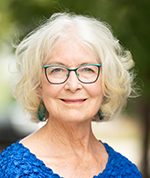
When the real estate market reached its lowest point in decades four years ago, the Denver Housing Authority was faced with a dilemma. What would it do with the parcels of land throughout Denver where development would have to be postponed until the market improved?
“The DHA decided that with such large parcels of land, we needed to hold them as strategically and gracefully as possible over the last four years. One of the solutions was to create our sustainability block,” says Chris Parr, director of development at Denver Housing Authority.
And that is precisely what happened at 26th and Lawrence streets in Denver, a block that has been transformed over the last four years into an urban sustainability ecosystem that contains urban farms; a year-round, high-altitude greenhouse operated by Feed Denver, Turn-key Aquaponics and Colorado Aqua Farms that produce plants and fish whose waste fertilizes gardens; wind monitoring; LED street lights; and electric car charging stations that are currently under construction, according to Parr.
However, when the market improved, Denver Housing Authority realized that building had to grow out of the current environment, an environment that was built on sustainable ideals and community involvement. Future building in the area could not be run-of-the-mill for-sale housing, but instead would have to contribute to the discourse of sustainability that had emerged in the area, according to Parr.
“Because of what has been done over the last three years or so, we can’t [build there] without respecting that creativity and atmosphere of collaboration,” says Parr.
This is how the Superefficient Housing Design/ Build Competition came into being. The project was to be a collaboration between Denver Housing Authority, Rocky Mountain Institute and five university groups from across the nation that would compete to design and construct superefficient housing that could become a model for Denver Housing Authority’s continued use throughout Denver.
The Rocky Mountain Institute, a Colorado nonprofit focused on resource efficiency and integrative design, will oversee the five student groups. Announced on Sept. 7, the winning groups are from the University of Colorado Denver, the University of Nevada Las Vegas, the Pennsylvania College of Technology, Ryerson University and the University of Utah. Denver Housing Authority contracted Rocky Mountain Institute to function as liaison between Denver Housing Authority’s architects and the five student groups. The hope is that architecture students involved will gain real-world experience through working under actual constraints and communicating frequently with developers, contractors and architects, according to Parr.
“Typically, architecture students are learning a lot of those interactions on the job, but we want them to really learn this in school so that they can actually come to architecture firms and bring that knowledge and help the industry build superefficient homes. [The competition] will make building science sexy,” says Alexis Karolides, a principal with Rocky Mountain Institute’s Built Environment practice.
The long-term effects of the project, however, are not limited to the education of future architects and engineers. Rocky Mountain Institute envisions an annual competition hosted by different cities each year.
The key to superefficient housing, says Karolides, is the creation of an initial housing envelope that will increase efficiency by requiring less electricity and be extremely airtight and well-insulated.
“[The project] is essentially a pilot of how it may be possible to do this in other cities,” Karolides says. “The whole point is that you end up with these superefficient homes that would actually be affordable and can then use them as models to build efficient housing generally.”
Upon construction, the houses will each be tested for a variety of efficiency components, according to Karolides, and the winning team’s design will likely be replicated throughout Denver.
While many of the project’s logistics are still up in the air, Karolides says it’s a step toward creating low income superefficient houses which, long-term, will decrease utility costs, maximize livability for low-income households and defy the current inexpensively built model of low-income housing.
The houses will be judged not only on design and cost criteria, but also on energy modeling and performance testing once built, according to Karolides.
According to Parr, up to this point, Denver Housing Authority hasn’t done a great job of standardizing an approach to efficiency systems. This competition is an exploration that will allow community involvement. At its root, it is a collaboration that grew out of the necessity for sustainability in an urban setting.
“It’s a conversation, and we don’t want there to be something that you can touch that doesn’t have a story about sustainability,” says Parr.
Respond: [email protected]














